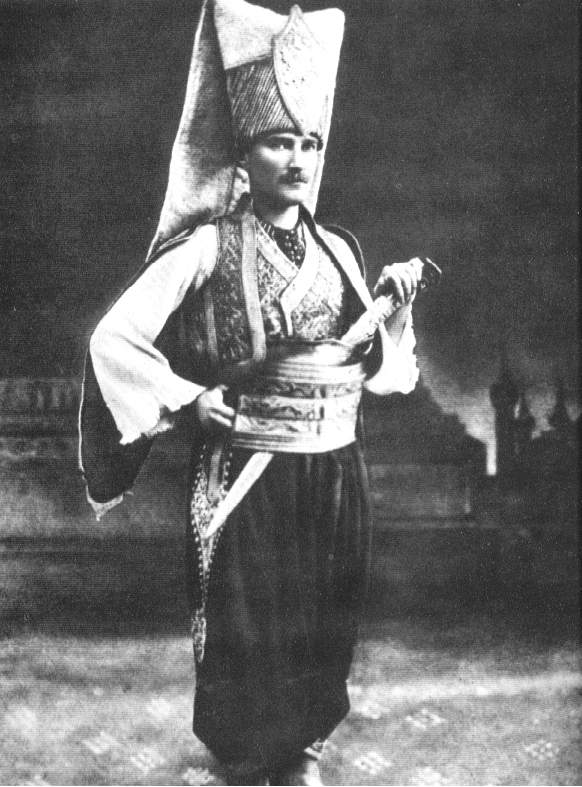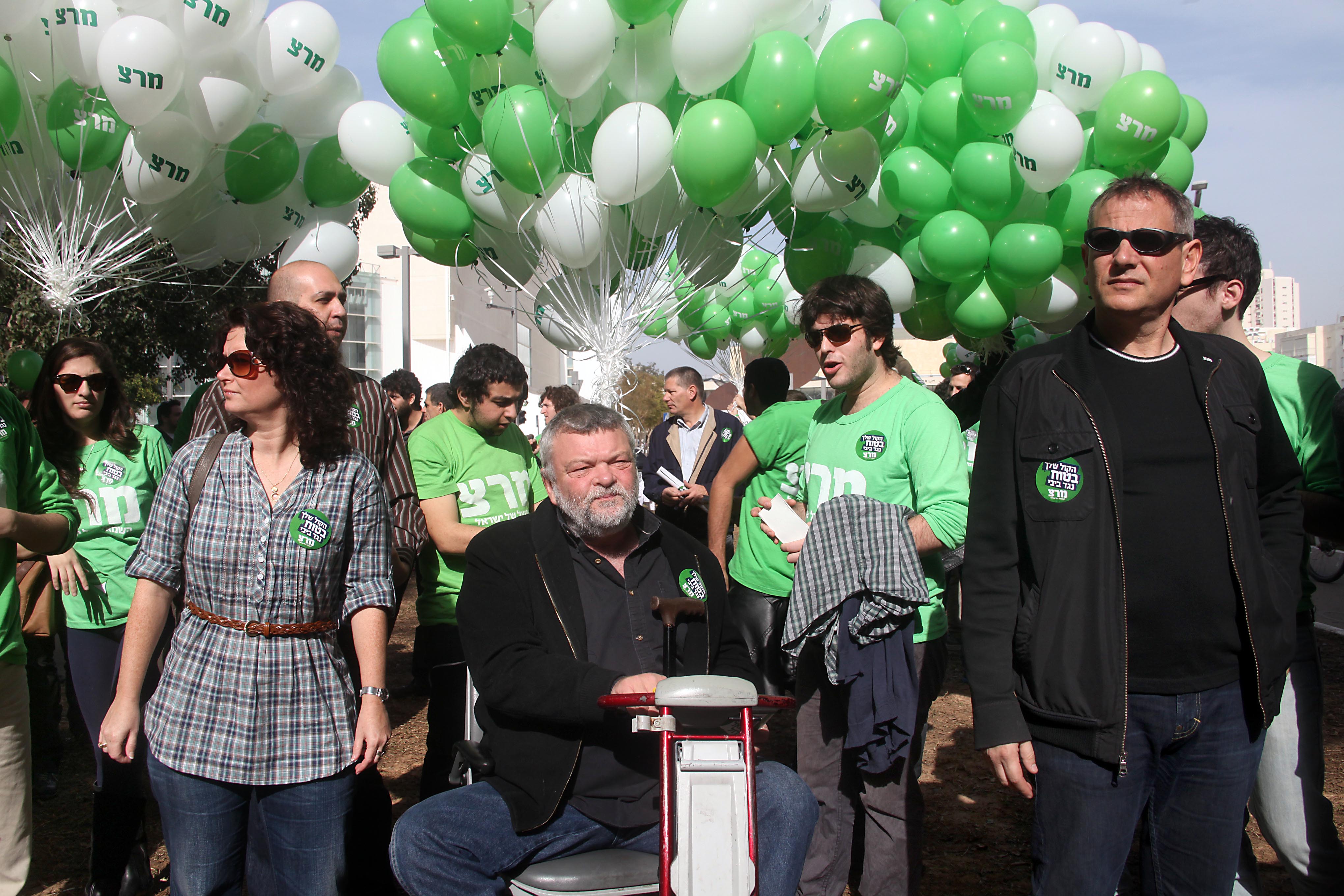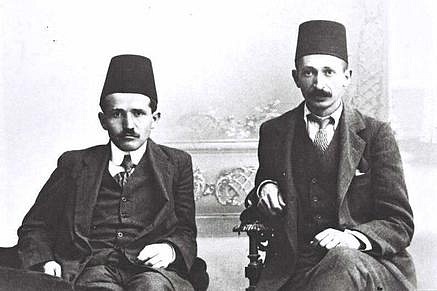GABRIEL MITCHELL
This article was first published at The Tower Magazine and republished under Gabriel Mitchell‘s permission.
Much of what has gone wrong in Turkish-Israeli relations can be traced back to the subtle differences of approach between the countries’ two founders a century ago.
Although they appear very far apart today, Israel and Turkey share common historical DNA. The two countries were forged in the same fire of post-World War I secularism, anti-imperialism, and ethnic nationalism; and they have both been tested by significant domestic and regional challenges. In particular, their founders, David Ben-Gurion and Mustafa Kemal Ataturk, both developed nation-specific models for statehood after the chaotic collapse of the Ottoman Empire. They did so by drawing from European models, while each observed the successes and failures of the other. Both emphasized a cultural and historical relationship to the land and adopted strict secular values. Their goals were the same, even if the end product was not: To construct nation-states that would “be masters of their own fate,” as Israel’s Declaration of Independence put it. As a result, the early years of these two Middle Eastern states—both of which were non-Arab, secular, and Western-oriented—were highlighted by an intense strategic partnership.
Today, of course, it has become painfully clear that the foundation of the Israeli-Turkish relationship is eroding. As this crisis in relations has made clear, while Israel and Turkey share similar tensions between religious and secular factions, fierce majority versus minority politics, and mutual strategic interests regarding Iran and its proxies, they are nonetheless very different countries.
Indeed, at times they appear to be almost diametrically opposed: Israel has emerged as a diverse, dynamic, entrepreneurial, and productive Western nation with an open and engaged public debate, as well as a commitment to the preservation of basic freedoms. Turkey’s transition toward liberal democracy, on the other hand, is under threat. A single party and leader are increasing their hold on power, journalists are being jailed at a rate higher than anywhere on earth, and a new foreign policy orientation is driving a wedge between the country and its Western allies. As a result, relations between Israel and Turkey have rarely been worse.
This rift is not simply the product of recent changes in Turkish politics and society. It is a direct consequence of critical choices made by Ben-Gurion and Ataturk nearly a century ago. An historical examination reveals the complex relationship between these two founding fathers, and helps explain their very different political legacies.
Mustafa Kemal (1880-1938) was born in Salonika, now the Greek city of Thessaloniki. It is estimated that, at the time, half of Salonika’s population was Jewish. For the most part, they were descendants of refugees from the Spanish expulsion in 1492. Working as merchants, bankers, and stevedores, the Jews’ role in the daily operation of the city was so essential that its port was closed on the Sabbath.
Growing up a Muslim Turk in such a cosmopolitan atmosphere had a positive effect on Mustafa Kemal’s attitude toward religious and ethnic minorities, but it also drove his desire for a Turkish national homeland. Though some, including Hillel Halkin, have claimed that Mustafa Kemal’s father was a Sabbatean Jew, the only concrete information we have regarding his childhood indicates that he was raised by a devout Muslim mother and a father who died when he was eight. Mustafa Kemal’s father also insisted that his son receive a Western education. As a result, his relationship with his parents appears to have pushed him toward a secular, if not atheist worldview.
David Ben-Gurion (1886-1973), born David Gruen in Plonsk, Poland, was also a foreigner in the land of his birth. Like Mustafa Kemal, he suffered early parental loss, his mother dying when he was eleven. And like Mustafa Kemal, his secular roots ran deep. In a 2011 book, Israeli President and Ben-Gurion protégé Shimon Peres remarked that Ben-Gurion’s father Avigdor, a lawyer, was “among the first in Plonsk to set aside the more traditional Jewish garb in favor of the frock coat and winged collar that suited his profession.” As a result, Ben-Gurion grew up in a fiercely socialist and Zionist home during a time when European nationalist movements were arbitrarily determining who did and did not fit their particular definition of citizenship.

The Gruen family had been active Zionists for several generations, which was unusual during the early years of the Zionist movement, and Ben-Gurion’s participation in local Zionist organizations began at an early age. Looking for advice regarding his son’s education, Ben-Gurion’s father wrote to Theodore Herzl, the founder of modern political Zionism. For a young activist like Ben-Gurion, the Jewish homeland in Ottoman-ruled Palestine must have seemed the only place to go. In 1906, Ben-Gurion madealiyah. It was the same year a young Turkish officer named Mustafa Kemal visited the Holy Land as a part of the Ottoman Empire’s Fifth Army.
Now in his mid-twenties, Mustafa Kemal was obsessed with the idea of Westernizing the Ottoman Empire. While in Palestine, he went to Jerusalem in order to seek the counsel of Eliezer Ben-Yehuda. Revealed in his 2011 biography of Mustafa Kemal, Princeton scholar M. Sukru Hanioglu writes that the young officer hoped to understand from Ben-Yehuda how he had managed to reinvent the Hebrew language after millennia of disuse and make it a cornerstone of Zionist culture. Mustafa Kemal would mimic this feat in 1928 by changing the Turkish alphabet from Arabic to Latin characters. Though we know little of his attitude towards the Zionist project, Mustafa Kemal’s encounter with Ben-Yehuda shows that he was acutely aware of the tiny Jewish renaissance that was taking place in Palestine, and he may have seen it as a validation of the nationalist enterprise he would launch several years later.
Like Ben-Gurion, Mustafa Kemal was swept up in the wave of nationalism that was sweeping the imperial world. He believed that the ills of the Ottoman Empire could only be cured by rapid modernization and enlightenment. He quietly prepared for the day when Western-oriented Turks like himself would replace the dysfunctional sultanate, establishing political societies in Salonika and elsewhere.
But he was not the only political entrepreneur who wanted change. In 1908, a party known as the Young Turks forced Sultan Abdulhamid II to restore the previously abrogated constitution and reconvene the General Assembly of the Ottoman Empire. Though the Young Turks’ revolution would ultimately pave the way for his success, Mustafa Kemal was initially forced to sit and watch as the revolution he so desired began to take place.
Ben-Gurion believed the Young Turks’ revolution was a golden opportunity for the Zionist movement. Remote from the seat of Ottoman power in Istanbul, Arab violence against the Yishuv—the Zionist community in Palestine—rarely garnered the attention of local Ottoman authorities. To make matters worse, Abdulhamid’s fear of Zionist separatism caused him to restrict Jewish immigration to Palestine. Perhaps, Ben-Gurion argued, the reestablishment of the Turkish parliament would allow the Yishuv an opportunity to advocate its cause. “Nowhere in the world,” he said,
is the Jewish community so disengaged from the political life, from the people, and from the language of the country in which it lives, than here in Eretz Yisrael…. Our political alienation and political ignorance weaken our efforts to establish ourselves in the Land.
Ben-Gurion plotted a new course, and turned away from the quest to conquer the swamps of Palestine. From this point forward, politics would be his arena of struggle. Taking the Hebrew last name by which he would be known for the rest of his life, he abandoned the agricultural life and set off to study Ottoman law in Constantinople.
Ben-Gurion was not the only Zionist who felt compelled to visit the Ottoman capital. Theodor Herzl himself had sought an audience with Abdulhamid II in both 1896 and 1901. He hoped to convince the sultan to permit Zionist activity in Palestine in exchange for paying off the empire’s considerable debt. He failed on both occasions.
Ze’ev Jabotinsky, the champion of Revisionist Zionism, visited Constantinople as a journalist in the wake of the Young Turks’ revolution. “Countless were the ministers who received me and proclaimed unanimously that there was no longer any difference between a Turk, a Greek or an Armenian,” he wrote in a Russian newspaper. “They all were Ottomans: one nation, one language.” Yet these same ministers were suspicious of the Zionist enterprise, and Jabotinsky left the metropolis troubled by the Young Turks’ ultra-nationalist ideology.
The development of national relations in Turkey will very soon reconcile the Young Turks with the inevitable strengthening of the national characteristics among the country’s ethnic groups and with the latter’s striving for self-government and concentration.
His predictions could not have been more chillingly accurate.
Before arriving at law school in 1911, Ben-Gurion journeyed to Salonika, Mustafa Kemal’s hometown, to study Turkish. He proved a talented student under the tutelage of a “young Jew from the law faculty” and the care of his Jewish landlord. Though the lingual and cultural barriers proved difficult, his hosts kept him well fed and celebrated “a kosher Passover in every detail and regulation, as I never did in Eretz Yisrael.” No doubt the relative freedom of Salonika’s Jews and the diversity of their employment struck Ben-Gurion as a pleasant change from the restrictive environs of his shtetl upbringing.
Ben-Gurion moved to Constantinople in 1912, sharing a modest flat with his friends Yitzhak Ben-Zvi (who would become Israel’s second president) and Israel Shochat (founder of the Yishuv’s defense organization,Hashomer). They joined a growing number of political activists in the Ottoman capital, including Mustafa Kemal, now a major, who arrived with his entire family the same year. The Balkan Wars had forced many Muslims in the region to flee the Greek armies. Most, including Mustafa Kemal, never returned to cities like Salonika. “Maybe this war will end soon,” Ben-Gurion wrote his father Avigdor, “and maybe we face a large-scale European war. In any case it’s clear that we are on the cusp of huge historical events that will completely change the politics of Europe.” With nationalist tensions further aggravated by violence, the Young Turks were exposed as ineffective moderators of the empire’s numerous ethnic conflicts.
Ben-Gurion and his fellow Zionists, however, were committed to their studies—perhaps to a fault—and remained in Constantinople. The political culture of the city must have been very attractive to them, granting them limitless opportunities to exchange ideas with activists and philosophers of every background. By July 1914, Ben-Gurion and Ben-Zvi had taken on the image of ideal Ottoman citizens, fluent in Turkish and Ottoman law. They wore the tarboosh—a traditional Ottoman piece of headgear, later banned by Ataturk—and their moustaches were combed into the popular style of the day. Everything seemed to be going as planned. It was only on their summer holiday to Palestine that their dreams of Ottoman partnership finally perished.

While en route to Jaffa, World War I broke out in Europe, and when Ben-Gurion and his companions finally reached Palestine, the Ottoman suspicion of Zionism detected by Jabotinsky a decade earlier had become antagonistic. Similar to their European neighbors, nationalist doctrines led the Young Turk revolutionaries to distrust the same minorities they had earlier embraced as partners in a great experiment with modernity. Zionism was now an outlawed movement.
Jewish foreign nationals like Ben-Gurion and Ben-Zvi were arrested, interrogated, and “banished forever from the Turkish Empire.” Zionist leaders across the ideological spectrum—from Chaim Weizmann to Ze’ev Jabotinsky—agreed that the time had come to pivot toward the West and support the British against the Ottomans.
Cast out of Palestine, Ben-Gurion and Ben-Zvi sailed to the United States. They arrived in New York City in May 1915, just as Mustafa Kemal, now a divisional commander, won an impossible victory against Britain on the shores of Gallipoli. Ben Gurion biographer Michael Bar-Zohar writes that, as they descended from the ship, their greeting party removed the “red Turkish tarbooshes from the heads of the new arrivals,” putting an abrupt end to Ben-Gurion’s bittersweet Ottoman years.
The rise of Mustafa Kemal, however, would create fresh opportunities for interaction between the Zionists and Turkey. In contrast to the Young Turks, who along with the sultanate were blamed for the collapse and partition of the Ottoman Empire at the end of World War I, Mustafa Kemal was lauded as a national hero for his victory at Gallipoli. He swiftly established a distinctly Turkish parliament in Ankara, rejected the sultanate and its capitulation to the Allies, and led the Turkish army on a bloody three-year campaign for independence. By the time the Turkish republic was firmly established, there was no question who would serve as its first president. It was a title Mustafa Kemal would hold until his death in 1938. His influence would prove so great that he eventually acquired the surname “Ataturk” or “Father Turk.”
Having returned to a Palestine now ruled by the British Mandate, Ben-Gurion hoped to match Ataturk’s success. Reminiscing many years later, he praised his counterpart’s achievements:
As a student in Turkey I was familiar with the wretched Turkish regime.… I believed it to be decayed and hopeless… when suddenly… a man appeared whose name was unknown…. [He] breathed new life into the Turkish people… [He led them] to revolt against enslavement… The Turks, who had been crushed by oppression, [now] gathered courage and became an independent nation, proud and respected.
The new Turkish national identity would be forged in a series of reforms that radically broke with the Ottoman past. Besides the language shift mentioned above, the Gregorian calendar was instituted, women were given equal rights, and Sunday replaced Friday as the day of rest. Turkey’s ancient Hittite, Sumerian, and Central Asian heritage was prioritized in order to create an origin myth that tied the Turks to the prehistory of Anatolia. Islam would be excluded from political life. Not everyone supported these changes, but as Hanioglu points out, Ataturk believed that a parliament with “an effective opposition was not an asset but an obstacle to be overcome.”
In the early years of the Turkish republic there was an abundance of obstacles. First among them was the lack of Western-educated Turkish men and women to facilitate the development of state and academic institutions, which made it nearly impossible for Ataturk’s startup nation to gain traction among his citizens. Enlightenment was not something he could impose without help.
Strangely enough, it was Hitler’s anti-Semitic policies that rescued Turkey’s Westernization project. In his capacity as president of Oeuvre de Secours aux Enfants (Organization to Save the Children), Albert Einstein—a committed Labor Zionist—wrote a letter to Turkish Prime Minister Ismet Inonu, Ataturk’s right-hand man and eventual successor. He beseeched the Turkish government to permit the entry of forty professors and doctors, the majority of whom were Jews, who could no longer work in Germany “on account of the laws governing there.” Although the West had turned these refugees away, Inonu and Ataturk welcomed them. By the end of World War II, over 190 scientists, engineers, architects, physicians, chemists, and their families would be granted asylum in Turkey, nearly 30 percent of the total number of German academics who fled Nazism.
The dramatically different paths of Ben-Gurion and Ataturk shaped their countries’ destinies.
Ataturk was by no means a committed liberal, but Einstein’s letter offered an opportunity to fulfill his vision of reform. With the influx of some of Europe’s best and brightest, Turkey’s university system and state infrastructure experienced a complete overhaul, supervised by émigré civil servants from Berlin and Vienna. As a result, Ataturk lived to witness Turkey’s first post-Ottoman cultural resurgence.
Even for Jews without a personal invitation, Turkey was still one of the best paths to safety from the Nazi threat. Thousands of Jews journeyed through Istanbul on their way to Palestine, and the Yishuv worked tirelessly to maintain this vital escape route. Though the Turkish government did not publicly endorse Zionism, Ataturk and his successors refused to be silent partners in the Nazi persecution. Turkish diplomats risked their own lives to rescue Jews in France and Rhodes, while Turkish authorities turned a blind eye to the elaborate rescue operations conceived by Ben-Gurion and the Jewish Agency. Saving Jewish lives became, in effect, a matter of Turkish government policy.
There is little evidence, however, of direct communication between Ataturk and the Zionist leadership. Teddy Kollek—the future mayor of Jerusalem and the Jewish Agency representative in Istanbul at the time—is quoted saying that Zionist activities were permitted largely because of a Turkish-Jewish handler named Goldberg who was particularly close to the Turkish establishment, “In no small part,” apparently, because of “his beautiful wife, who… had been the mistress of Mustafa Kemal (Ataturk).” There is another story suggesting, in a similar fashion, that Chaim Weizmann attempted to negotiate an “Anglo-Turkish alliance” against the Nazis in 1938 through Ataturk’s Jewish dentist, Sami Ginsberg. Nonetheless, it is clear that, whether by direct action on the part of the Turkish government or by other means, thousands of Jewish lives were saved by Ataturk’s republic.
In Palestine, many of Ben-Gurion’s ideas showed a striking similarity to those of Ataturk. Like his Turkish counterpart, Ben-Gurion rejected the notion that Judaism’s religious tenets should dominate Zionist identity. To him, these were vestiges of the weak and powerless Diaspora Jew. He constantly sought to establish a young, secular, pioneering ethos that respected the biblical texts as a historical guide that reinforced the relationship between the Jewish people and the Land of Israel. He also pushed the early language reform that institutionalized Hebrew as the cultural and political language of the Zionist movement.

Much like Ataturk, Ben-Gurion was the sun around which the founding generation of Israeli politics revolved. From the moment he took the leadership of the Jewish Agency in 1935 to his retirement in 1970, Ben-Gurion was the dominant figure in Zionist and Israeli politics. He served as prime minister for fourteen of the state’s first fifteen years, leading its military forces to victory during the 1948 War of Independence and then unifying them under the rubric of the Israel Defense Forces. Even his rivals recognized Ben-Gurion’s unparalleled political skill, to such an extent that opposition leader Menachem Begin insisted that the man he had once called an “insane dictator” help formulate a concrete strategy for the 1967 war.
But there was also a significant difference between Ataturk and Ben-Gurion’s approach to leadership. Ben-Gurion was faced with the presence of alternative and oppositional Zionist organizations in Israeli politics. As a result, he was forced to compromise in order to maintain power. Ben-Gurion’s Mapai party shared the first Knesset with eleven other parties, and never ruled without the need for a multi-party coalition. As a result, Ben-Gurion made numerous concessions to the country’s religious and ethnic minorities, granting exemptions from military service to ultra-Orthodox and Arab men, as well as overseeing the establishment of separate secular and religious courts. As difficult as it was for him personally, Ben-Gurion’s acknowledgement of the limits of his power allowed Israel to develop a nation-state with a rich democratic tradition.
Ben-Gurion was an admirer of Ataturk, but led his country down a more democratic path.
In Turkey, things proceeded along a different path. Ataturk’s republic was something very close to authoritarian. During his lifetime, and for several years after, Turkey was effectively a one-party state. In addition, his rule fostered what became a political cult of personality. The elimination of religion from public life created a cultural void that was gradually filled by Kemalism, which was, in effect, a new civic religion, heavily influenced by scientism and Darwinian evolutionary theory.
After Ataturk’s death, Kemalism posthumously idolized the life, sayings, and personality of its founder. Though later Turkish governments would try to rectify the state’s relationship with Islam, the military, which Ataturk deemed imperium in imperio—a state within a state—proved a formidable guardian of Kemalist ideology. Politicians and civilians deemed a threat to the republic were often imprisoned. And in 1960, 1971, and 1980, military elites ousted the Turkish government by force, citing its “constitutional duty” to return the country to its founding principles. Repeated over the better half of a century, this process only served to harm the credibility of the military and motivate Kemalism’s opponents, who when given the rare chance of being elected to office tended to employ equally authoritarian methods in order to reform the Kemalist model. Today, this cycle is playing itself out again under the regime of current Prime Minister Recep Tayyip Erdogan.
The distinct difference between the nations founded by Ben-Gurion and Ataturk thus lies not only in their respective cultures, but also in the underlying methodologies of their founders. Even in his most authoritarian moments, Ben-Gurion generally respected the right to free speech and public demonstration, establishing an independent judiciary on the Western model, as well as other checks and balances to safeguard democratic freedoms. This fostered a tradition of legitimate public opposition, both from outside the governing coalition (such as Begin’s Herut party and the Communists) and from within. All of this served to limit his ability to unilaterally shape the Jewish state. Although he was a visionary in his own right, Ben-Gurion was more the architect than the philosopher of the Zionist movement. Theodor Herzl’s image was never less dominant in the public mind than his own. Ataturk was architect, philosopher-king, and icon all wrapped into one. As a result, and in spite of the similar challenges they face, Israel and Turkey are traveling along parallel yet distinctly separate paths.
What can we learn about Israel and Turkey from the lives of their founders? Ben-Gurion and Ataturk were not competitors; rather they shared a kinship in their vision of a secular and Westernized Middle East. Accordingly, Israel and Turkey have long validated their political choices by measuring themselves against one another, which helped develop each nation’s model for statehood.
Yet the strategic decisions undertaken by each leader at the height of their power led to fundamental differences in their respective states’ relationship to democracy, individual freedoms, and the basic rights required to create a vibrant opposition that accepts the democratic process.
No Israeli politician has ever approached Ben-Gurion’s dominance. Yet his ability to resist the vast temptations of such power, and the vision to institutionalize measures that would prevent his successors from falling in the same trap, enabled Israel to maintain its fundamentally democratic character in the generations to come. That this feat was accomplished in the midst of war and a massive wave of immigration, and without the legislative support of a constitution, makes Ben-Gurion’s legacy all the more impressive.
Turkey, by contrast, has never been able to sustain the kind of public confidence enjoyed and engendered by Ataturk. As a result, it suffered repeated coups that marginalized opposition voices and created the polarized politics we see today. Whether Turks will manage to overcome the yoke of their past, or suffer another prolonged deterioration into tyranny is very much an open question.
ABOUT THE AUTHOR
Gabriel Mitchell is the Israel-Turkey Project Coordinator for Mitvim: The Israeli Institute for Regional Foreign Policies, and holds an MA in Political Science from the Hebrew University of Jerusalem. His work has been published in a number of newspapers and journals, including The Jerusalem Post, The Times of Israel, Hürriyet Daily News, Turkish Policy Quarterly, and The Washington Review of Turkish & Eurasian Affairs. He can be followed on Twitter at @GabiMitch and on his website: www.mideastinsider.com.

